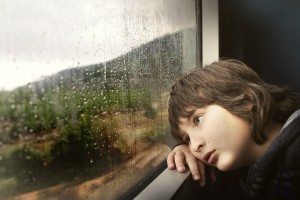Depression and Bipolar disorders
Depressive and Bipolar Disorders
Depression and Bipolar Disorders are also called mood disorders. They are characterised by an anomalous mood regulation that causes an intense suffering and strong life consequences. 
Grief and Bereavement con be included as well in this category.
Mood can be defined as:
“a pervasive and sustained emotion which can markedly colour one’s perception of the world. Mood refers to a person’s pervasive and sustained emotional temperament; affect refers to the fluctuating changes in a person’s more immediate physio-emotional response(s)” (Segen’s Medical Dictionary, 2012).
Depression
We have all experienced moments of intense sadness and low mood, maybe as a consequence of a particular moment of our life.
The difference between normal sadness and a depressive episode relies in the severity and temporal length of the symptoms.
Symptoms
A Major Depressive Episode imply the presence of 5 or more of the following symptoms (for at least 2 weeks, present most of the time and most of the days):
- Depressed mood;
- A significantly reduced level of interest or pleasure in most or all activities;
- A considerable loss or gain of weight or an increase or decrease in appetite.
- Insomnia or hypersomnia (sleeping more than usual);
- Psychomotor agitation or retardation;
- Feeling fatigued, or diminished energy;
- Feelings of worthlessness or excessive guilt;
- Problems in concentrating or indecisiveness;
- Thoughts of death.
These symptoms represent a significant change in the usual life-style of the person and cause an intense distress or problems in everyday life. They are not caused by a substance use or a medical condition.
Recurrence of 2 or more Depressive Episodes with at least a 2-months interval in between defines the boundaries of Major Depressive Disorder.
Bipolar disorders
While Major Depression is a unipolar mood disorder, in bipolar disorder mood swings from periods of intense depression to periods of excessive mood elevation.
The are 2 types of bipolar disorders:
Type I: depression alternates with mania;
Type II: depression alternates with hypomania.
What are mania and hypomania?
Mania is a period of at least 1 week (or less if hospitalisation occurs) of abnormal mood elevation. The person can experience the following symptoms:
- inflated self-esteem or grandiosity;
- decreased need for sleep;
- more talkative than usual or pressure to keep talking;
- flight of ideas or subjective experience that thoughts are racing;
- distractibility;
- increase in goal-directed activity (either socially, at work or school, or sexually) or psychomotor agitation;
- excessive involvement in pleasurable activities that have a high potential for painful consequences.
Hypomania on the contrary refers to a less intense episode.
The person can have experience of the same symptoms described above but they last fewer days and they do not bring dramatic consequences as mania nor hospitalisation.
To read more about what does it mean to suffer from bipolar disorders click here.
How can mood disorders be treated?
Regarding Major Depression, NICE guidelines suggest that the treatment should be tailored depending on its severity.
The treatment of severe depression is usually made up of pharmacological treatment with antidepressants (SSRIs seem to be the better tolerated ones) combined with a psychological support, as cognitive behavioural psychotherapy or counselling. For mild-moderate depression psychotherapy is the recommended treatment.
Regarding the treatment of Bipolar Disorders, the use of mood stabilisers is highly recommended, combined as well with talking therapy.
If you want to know more about how to cope with Bipolar Disorder click here.
Related articles
Depression:
“Sadness and depression: when do you really cross the line?”, by I. Tedeschi
Grief and Bargaining:
“Bereavement: Maria’s experience”, by I. Tedeschi
Bipolar disorder:
“Life on a swing: sharing life with Bipolar Disorder”, by I. Tedeschi